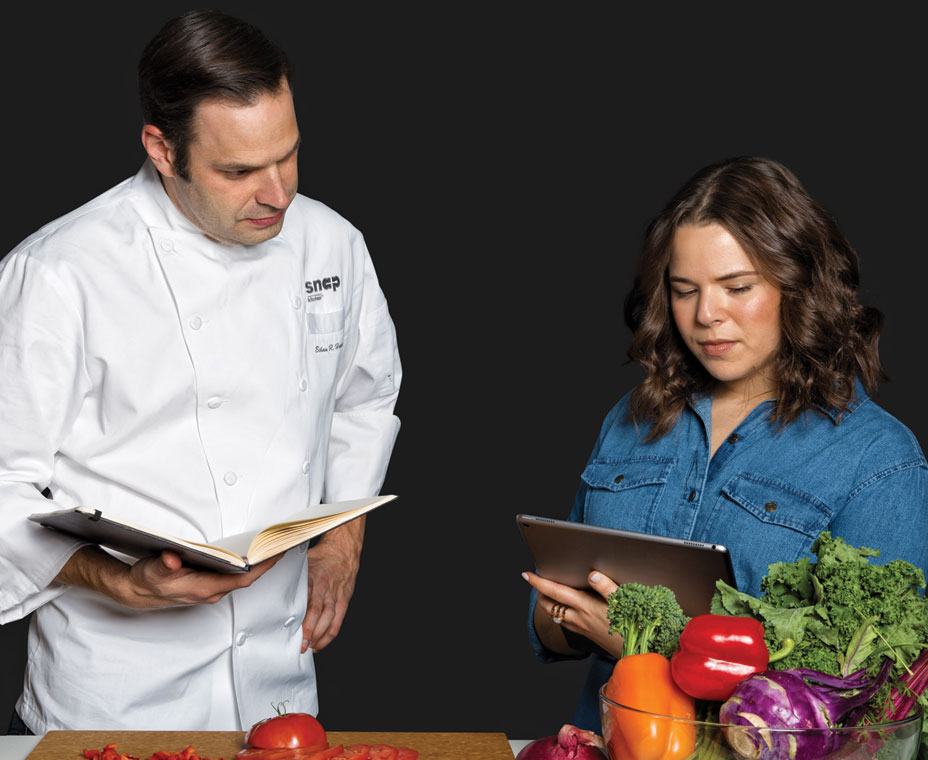When Snap Kitchen was founded in Austin, Texas, in 2010, there were two immediate hires: a head chef and an in-house dietitian. After all, the brand’s foundation was “this relationship between the chef and the dietitian,” says Snap Kitchen lead dietician Claire Siegel. Her responsibilities are wide-ranging and include menu development, ingredient and product vetting, staff and customer education, and more.
While in-house nutritionists and dieticians are nothing new in the restaurant space, their time in the limelight is. As diners become more health conscious, these experts serve as back-of-house innovators as well as consumer-facing educators.
Christy Trinkler is the senior business strategy and development director of the Trabon Group, which helps restaurants develop and integrate menus and marketing. She says most brands are working with dietitians and nutritionists, including those not necessarily associated with health food, like McDonald’s and Wendy’s.
Today’s guests want transparency, high-quality ingredients, and nutrient-dense foods, Trinkler says, so it’s in a brand’s best interest to have nutrition expertise in-house.
“One of the best things that I’ve seen from nutritionists on staff is that they’re great brand ambassadors. They protect the brand, but they are also the guest voice,” Trinkler says. “It’s a really nice combination.”
At Toronto-based Freshii, in-house nutritionist Andie Shapira acts as a brand ambassador every time she checks her inbox. Shapira’s name and email address adorn the front door of more than 300 Freshii stores across 20 countries. Customers are encouraged to shoot Shapira a message with nutrition questions, concerns, and requests for personal advice.
“You can launch a great-tasting menu item, but you need a nutritionist to say this is actually healthy and will help guests reach their health goals,” she says.
Shapira gets several emails every day requesting advice on everything from navigating confusing dietary restrictions and sensitivities to calorie intake. Many customers ask for specific ingredient breakdowns of Freshii sauces and dressings.
Shapira also speaks with customers on the phone and sets up meetings with Freshii guests in Toronto. Through interactions such as these, she has cultivated personal relationships with several patrons who regularly ask questions.
“You can go to any healthy restaurant and get a healthy dish, but getting access to nutritionists accentuates the experience,” Shapira says. “I think the most rewarding part of my job is helping people make healthier choices.”
Siegel finds that interacting with guests not only provides good PR and improved guest experiences, but it also drives menu development. For instance, during her regular visits to local stores, Siegel noticed that guests were seeking low-sodium options. She relayed that information to chefs so they could develop items accordingly.
Nutritionists and dieticians can also play a pivotal role in creating new products, Trinkler says. Because of their knowledge of nutrition database systems, they bring skills that traditional culinary teams don’t have. Chefs, like the general public, hear conflicting information about health, diet, and food trends. Dietitians and nutritionists can filter out the noise and determine what’s real and worth implementing in recipes.
“I’m the gatekeeper. I give the red light and green light,” Siegel says.
Trinkler has also noticed that in-house dietitians and nutritionists are able to think further ahead in the product innovation process, pre-emptively looking at healthier substitutions or modifications that typically wouldn’t be considered until well into the future.
For both Siegel and Shapira, menu innovation is a large part of the job. They research food trends, run competitive analyses, work with chefs to create and test recipes, analyze recipes from a nutritional standpoint, and vet ingredients to ensure they meet the brands’ strict standards.
“From the very beginning of a recipe, we’re automatically thinking, ‘How can we make this as good for our guests as possible?’” Siegel says. “Whether that’s decreasing the amount of oil or introducing more veggies, it’s a dialogue I have with the chefs.”
In-house nutritionists and dietitians also improve existing items. Shapira is especially proud of Freshii’s recent overhaul of salad dressings, which are made in-house. For example, she helped the brand develop a healthier iteration of ranch dressing by substituting Greek yogurt. The result reduced fat and increased protein.
In-house experts can also help brands revamp the nutrition information to comply with new FDA regulations, which are set to go into effect in May.
Trinkler, who has worked with brands to create compliant menus over the last few years, says restaurants with nutritionists or dietitians often have an advantage when it comes to labeling. Because they’ve developed the recipes from a nutrient-based perspective, nutritionists are able to provide analyses of menu items; they also save restaurants the expense of bringing in a third party.
But for Siegel, the best reason for brands to hire in-house nutrition experts is to help guests make healthier choices—whether or not a brand is associated with healthy food.
“If it’s the dietitian’s role to ensure that they have some items that are nutritious, or more nutritious, I think that’s a win for everyone,” she says.
This story originally appeared in QSR’s March 2017 issue with the title “The Nutrition Expert is in the House.”













